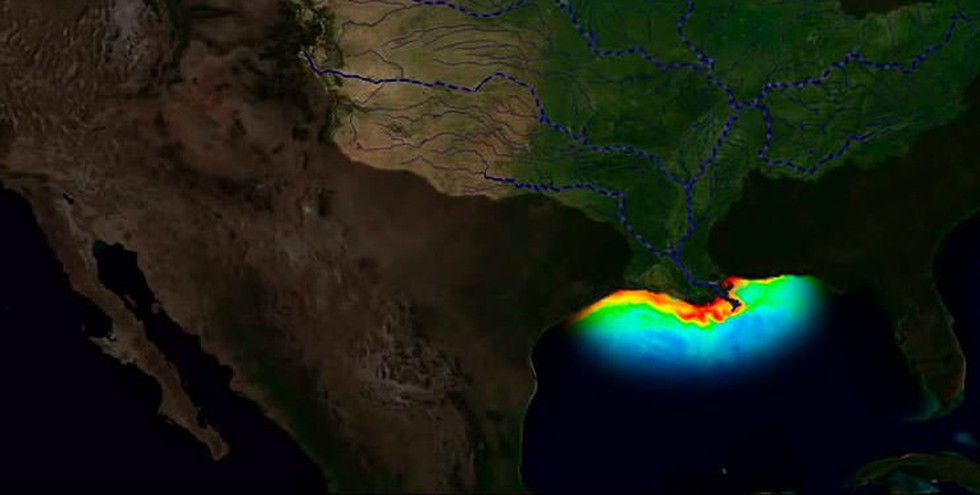About:
- Hypoxic zones are areas in the ocean of such low oxygen concentration that animal life suffocates and dies, and as a result are sometimes called "dead zones."
- Less oxygen dissolved in the water is often referred to as a “dead zone” because most marine life either dies, or, if they are mobile such as fish, leave the area. Habitats that would normally be teeming with life become, essentially, biological deserts.
- Hypoxic zones can occur naturally, but scientists are concerned about the areas created or enhanced by human activity. Nutrient pollution is the primary cause of those zones created by humans.
- Once in the Gulf, these nutrients trigger algae blooms that choke off oxygen in water and make it difficult, if not impossible, for marine life to survive.
Gulf of Mexico dead Zone:
- One of the largest dead zones forms in the Gulf of Mexico every spring. Each spring as farmers fertilize their lands preparing for crop season, rain washes fertilizer off the land and into streams and rivers.
- The Gulf dead zone owes its size to the mighty Mississippi River, which collects tons of nutrients from agricultural and urban runoff from cities through its course.
- Dead zone in the Gulf of the Mexico is the world's second largest. The world's largest dead zone is in the Baltic Sea.
